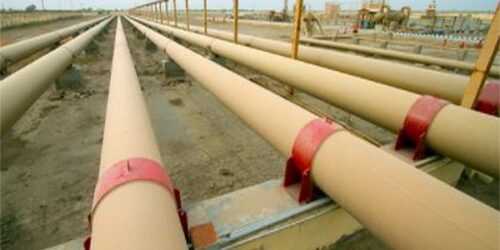The Ministry of Energy has asked the Oil and Gas Regulatory Authority (Ogra), gas utilities and the sponsors of two upcoming LNG terminals to proceed with the execution of a gas transportation agreement (GTA), but a lower allocation of firm pipeline capacity has worried investors.
In a letter issued on November 12, the energy ministry (petroleum division) has notified that based on a summary of the Ministry of Maritime Affairs, the Cabinet Committee on Energy (CCoE) had on October 8 “approved the proposal of the petroleum division presented in the said CCoE meeting for distribution of pipeline capacity allocation on a three-month rolling basis which will be available with effect from Jan 1, 2023”.
The letter, which has been sent to the regulator, the two gas utilities and the sponsors of two LNG terminals, said that under the CCoE decision, Tabeer Energy would be given a capacity of 200mmcfd (million cubic feet per day) in the SSGCL network and 50-100mmcfd in the SNGPL network, making a total capacity of 250-300mmcfd available to the firm.
Likewise, it said, Energas will be given 150mmcfd capacity in SSGCL and 100-150mmcfd capacity in SNGPL system, taking its total also to 250-300mmcfd. The total pipeline allocation to the two terminals would work out at 500-600mmcfd. “The CCoE further directed the relevant parties to proceed with the execution of (GTA) and take subsequent steps accordingly.”
The letter further noted that the federal cabinet had ratified the above CCoE decision “with the stipulation that the pipeline capacity allocated to each new terminal developer shall be available on firm basis post commercial operation date (COD)/commissioning of new LNG terminal till commissioning of PakStream Gas Pipeline”.
Informed sources said the two terminal developers had decided to call on the prime minister to convey that lower than committed capacity allocation, and that too on a rolling basis, and the ambiguity about the firm capacity allocation had created an uncertain environment for them to commit investment plan for 30 years.
Sources in the maritime affairs ministry said that first the CCOE, and then the cabinet, had approved its summary under which SNGPL alone was to make available 250-300mmcfd each to both terminal companies on top of 50-100mmcfd by SSGCL for commercial viability of the terminals to ensure final investment commitment.
The CCoE in its public announcement has said that it “approved the summary submitted by the Ministry of Maritime Affairs on the report of the Inter-Ministerial Committee on the Establishment of New Terminals. CCoE discussed the report in detail and approved the allocation of pipeline capacity. The chair directed to fast-track the work on setting up new LNG terminals”.
Interestingly, the ministry’s summary that was approved by the CCoE required “SNGPL to allocate 250-300mmcfd pipeline capacity to the each of the new LNG terminal developers” as opposed to 150-250mmcfd combined capacity for both terminal developments.
The maritime affairs ministry had also reported that an inter-ministerial committee on the issue had noted that the petroleum division and Sui gas companies continue to resist pipeline capacity to new terminal developers of the private sector — Energas and Tabeer Energy.
It said the federal cabinet had on September 8, 2020 “directed the petroleum division to allocate pipeline capacity in the existing and the new planned pipeline within 30 days”. The Oil and Gas Regulatory Authority also directed Sui companies to allocate 300-350mmcfd of pipeline capacity to the two terminal developers each in May this year.
It said the Sui gas companies were “reluctant to allocate pipeline capacity”.
The meeting was told that gas companies had been denying the existence of any pipeline capacity all these years. Finally, Sui Southern Gas Company confirmed that capacity was available and had agreed to allocate capacity to both terminals.
However, SSGC was delaying land lease to new terminals for pipeline tie-in points. “Taking serious view of flouting the order of the regulator”, Ogra again sternly warned the gas companies “to allocated pipeline capacity to new LNG terminals”.
The report said there was general consensus, excluding SNGPL, that there was 600mmcfd of gas pipeline capacity available for the new LNG terminal developers and the regulator also confirmed the same situation.





